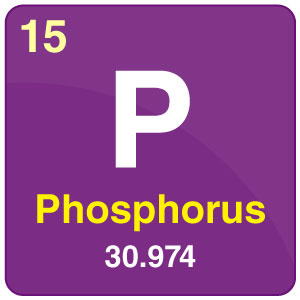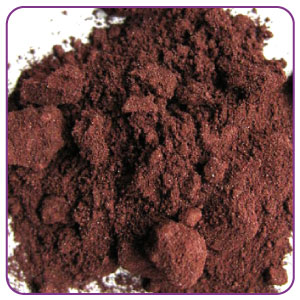
| Symbol | P |
| Atomic Number | 15 |
| Atomic Mass | 30.974 |
| Discovered by | Phosphorus was discovered by Hennig Brandt |

Chemical Properties
| Group | 15 | Melting point | 44.15 °C, 111.47 °F, 317.3 K |
| Period | 3 | Boiling point | 280.5 °C, 536.9 °F, 553.7 K |
| Block | p | Density (g cm−3) | 1.823 (white) |
| Atomic number | 15 | Relative atomic mass | 30.974 |
| State at 20 °C | Solid | Key isotopes | 31P |
| Electronic configuration | [Ne] 3s2 3p3 | CAS number | 7723-14-0 |
| ChemSpider ID | 4575369 | ChemSpider is a free chemical structure database | |
Table of Contents
- What is Phosphorus?
- Atomic Mass of Phosphorus
- Uses Of Phosphorus
- Health Effects of Phosphorus
- Frequently Asked Questions – FAQs
What is Phosphorus?
- Despite the fact that for thousands of years people have been using the periodic table with phosphorus (P) in it, it was not until 1669 that it was secluded and termed by a chemist named Brandt.
- Phosphorus is an element that one will under no circumstances find freely in our environment. It is extremely reactive.
- Phosphorus is a chemical element with an atomic number of 15, which means that the atomic structure includes 15 protons and 15 electrons. For Phosphorus, the chemical symbol is P.
Atomic Mass of Phosphorus
The atomic mass of phosphorus is 30.973762 u.
Atomic mass is defined as the number of protons and neutrons in an atom where the mass of each proton and neutron is approximately 1 amu (1.0073 and 1.0087, respectively). The electrons within the atom are so tiny compared to the protons and neutrons that their mass is negligible. The carbon-12 molecule, which is still used as a standard today, comprises six protons and six neutrons for the atomic mass of twelve amu.
Atomic weight, unlike the weight of an object, has nothing to do with the force of gravity. It is a unit-less value that is the ratio of the atomic mass of the naturally occurring isotopes of the element to that of the one-twelfth mass of the carbon-12. For elements such as beryllium or fluorine that have only one naturally occurring isotope, the atomic mass is equal to the atomic weight.
The relative atomic mass of the element is the weighted average of the mass of the isotopes on a scale where the carbon-12 atom has a mass of exactly 12 units.
Uses Of Phosphorus
- There are four forms of phosphorus usually used these days: white, black, red, and violet.
- The main function of phosphorus is in the formation of bones and teeth.
- Phosphorus can also be found in a variety of products such as baking powder, fertilisers, and fireworks.
- It also plays an important role in the production of steel.
- Phosphates are also used in the production of fine chinaware and special glasses.
Health Effects of Phosphorus
Phosphorus can most commonly be found in the environment as phosphates. Phosphates are essential substances in the human body because they are part of DNA materials and contribute to the delivery of energy. Phosphates can also be commonly found in plants.
Humans have radically changed the supply of natural phosphate by adding phosphate-rich manure to the soil and by using phosphate-containing detergents. Phosphates have also been added to a number of foods, such as cheese, sausages and hams. Too much phosphate can cause problems with your health, such as kidney damage and osteoporosis. There could also be phosphate shortages. Too little phosphate can cause problems with your health.
Phosphorus has a white colour in its pure form. White phosphorus is the most dangerous source of phosphorus known to us. When white phosphorus occurs in nature, it can pose a serious risk to our health. White phosphorus is extremely toxic and, in many cases, it will be fatal.
Frequently Asked Questions – FAQs
What is the phosphorus element used for?
Phosphorus is a critical plant nutrient and its key use is in the manufacture of fertilisers. Even though there are biocarbon and nitrogen cycles, there is also a phosphorus cycle. Phosphorus is used in the manufacture of safety matches (red phosphorus), pyrotechnics and inflammatory shells.
What is unique about phosphorus?
Phosphorus is a poor conductor of heat and electricity, except for black phosphorus. All types of phosphorus are stable at room temperature. The white form (sometimes called yellow phosphorus) is similar to wax, the red and purple forms are non-crystalline solids, while the black allotrope is equivalent to graphite in pencil lead.
What are the main sources of phosphorus?
Phosphorus is found to be high in protein foods such as milk and milk products, meat and alternatives such as beans, lentils and nuts. Grains, in particular whole grains, provide phosphorus. Phosphorus is found in smaller quantities in vegetables and fruit.
What is phosphorus and why is it important?
Phosphorus is an element having atomic number 15. It is represented by the atomic symbol P. It plays an important role in how the body uses carbohydrates and fats. It is also necessary for the body to make protein for the growth, maintenance and repairing of cells and tissues.


Comments